Live Crabs
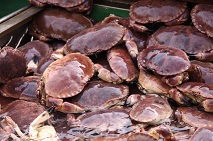
Keeping live crabs alive from catching or purchasing them to transporting them and storing them is very important. Since Blue Crab are the basic type of crab we will, again, refer to Jerald and Glenda Horsts book, "Louisiana Seafood Bible, The: Crabs" to help you deal with these crabs successfully...
"Transporting and storing live blue crabs maybe more challenging than handling any other seafood, including live crawfish. Heat and a lack of moisture are deadly enemies of crabs and combined can quickly kill the freshest crabs.
Getting live crabs home from their place of capture or purchase is the first challenge. Freshly caught crabs or those that have been properly stored in a seafood cooler can withstand an hour or so of transport with no special protection beyond being protected as best as possible from direct sunlight and wind. Crabs captured from fresh water or lo-salinity areas are much more frolic and more resilient when out of the water than are crabs from high-salinity areas. If you purchase crabs rather than catch them, the seller can tell you where they were caught.
Slushing Live Crabs
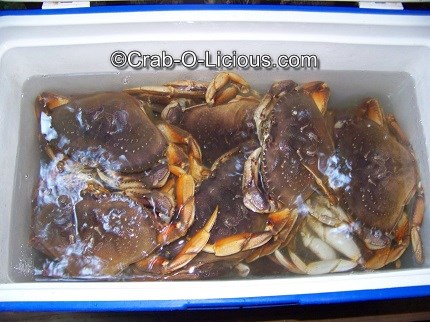
The absolute best way to prepare live crabs for longer transport is to slush them in an ice-water bath for 4-5 minutes. Slushing is easiest to do if the crabs are in a wooden, plastic, or metal basket or a plastic seafood lug. Do not immerse the crabs for longer than 5 minutes as a long soak may kill them.
Slushed crabs may be transported in the basket or lug used for slushing or in an ice chest. If an ice chest is used, the lid should be slightly open, and the drain hole should be open to allow air circulation. For whatever container used, a wet burlap sack or several layers of wet newspaper should be placed on top of the crabs in the container. Slushed crabs can be transported for 8-10 hours, even in very hot weather, if they are protected from direct wind. If the crabs in a basket or lug are transported in an open bed of a pickup truck, they should be placed in the front part of the bed as close to the sheltering cab of the truck as possible.
If facilities for slushing do not exist, crabs may be kept alive with ice, as long as they are protected from direct contact with the ice. A layer of ice should be placed on the bottom of the ice chest, followed by wet burlap, and then the crabs. Another layer of wet burlap is spread on top of the crabs and more ice is added. Crabs packed this way can be held alive for as long as 2 days. The drain hole on the ice chest must be left open to drain melt water and allow oxygen into the ice chest for the crabs to breathe. The lid of the ice chest should also be cracked open slightly.
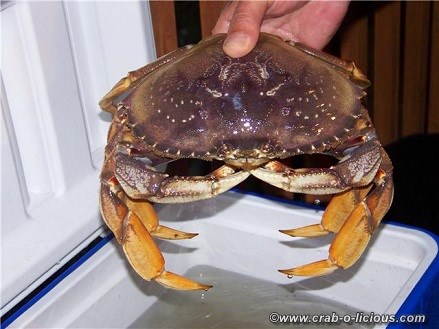
Live crabs can also be stored in a refrigerator or walk-in cooler for up to 2 days, especially, if kept moist with wet newspaper or burlap. Ideal storage temperature are between 35-40 degrees. When live crabs are to be transported and stored, they should always be packed belly down and back up. An upside down crab will not live as long as a right-side up crab will live. Unless crabs are sluggish from being thoroughly chilled, they are most safely handled with metal or wooden crab tongs. A large male blue paw crab can deliver a nasty pinch.
A less-desirable, but feasible, option for transporting and holding crabs is to ice them as one would ice shrimp or fish. Since this will kill the crab, it is imperative to inspect the crabs individually before icing to be sure that they are alive. An iced spoiled crab can not be differentiated from an iced live crab when they are unpacked later.
Iced crabs will experience some textural changes in their meat. The changes may or may not be noticeable. Iced crabs are also a little harder to peel, as the meat will stick slightly to the shell."
As noted above that this information is basically focused concerning Blue Crab, MOST of this information is wise to use if you are out to catch dungeness crab or any other type of crab as well. The only thing you don't have to tend to with transporting dungeness or red rock or etc. is that since they are hard shell species you really don't have to layer them with burlap or newspapers. That process makes more sense with the blue crabs in their soft shell state.
Here's some questions that other visitors have had and answers to Keeping Crabs Alive that you may be interested in, too...
If you have any questions or comments, feel free to use our comments section below...
We hope you enjoy this site and keep coming back for more recipes and
information about these popular crustaceans. Feel free to share this site with
your friends and family!
Go back up to the top of Live Crabs
Check out some delicious Soft Shell Crab Recipes, here.
We have some wonderful crab meat recipes, here, you can try!
Go to Crab-O-Licious.com Homepage
|
|

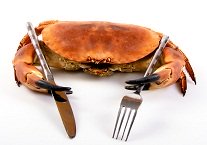

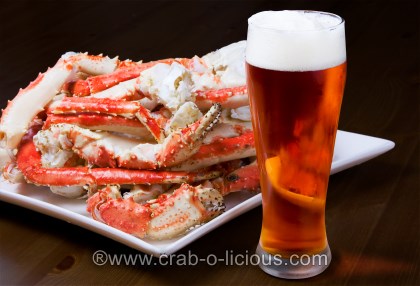
New! Comments
Have your say, ask a question, or at least say hello! Leave us a comment in the box below.